- Home >
- Our Actions >
- Ambassador report
9
Comments
Air pollution in BaH (A Research on Radon gas) |
|---|
|
Air Pollution (in Bosnia and Herzegovina) Air pollution is an ever growing concern for the environment on both regional and global levels. Indirectly by contamination of the environment, millions of peoples' lives are threatened. Many health risks are associated with increased air pollutant concentrations, such as chronic and acute respiratory diseases (asthma and lung cancer). In 2014, 92% of the world population was living in places where the WHO air quality guidelines levels were not met. Ambient (outdoor air pollution) in both cities and rural areas was estimated to cause 3 million premature deaths worldwide in 2012.[1] Some countries have developed effective strategies to deal with air pollution, but other countries aren't so fortunate. Nearly 90 % of those deaths occurred in the WHO Western Pacific and South-East Asia regions. Bosnia and Herzegovina's air pollution has been greatly reduced after the destruction of power plants during the war. Some significant air pollution is still created through industrial activities (thermal power plants, cement factories, wood processing, chemical, detergent and fertilizer industries), but traffic as well. Sarajevo is well known for being one of the most polluted Southeast European cities, especially in SO2 concentrations. Federal Hydro-Meteorological Institute of Bosnia and Herzegovina (FHMZBiH) issued a warning that SO2 concentrations in Sarajevo can exceed 1000 micrograms per cubic meter. Concentrations of SO2>1000 micrograms per cubic meter are extremely alarming, considering that concentrations of about 500 micrograms per cubic meter are taken as risky enough to raise a warning. It's mostly during winters that smog gets trapped because cold air is heavier than hotter, and the concentrations can rise high. It is clear that Bosnia and Herzegovina is far from greatly contributing to the world's air pollution, but awareness needs to be promoted of the local air pollution that threatens the health of thousands of people.  Sarajevo smog, Photo taken from Flickr We all know that what dangers air pollution can pose to the environment, but what if there were naturally occurring air pollutants that actually threatened humans more than the environment? Well, it is known for sure that these pollutants exist. The most notable of these is the gas Radon. Radon is a naturally occurring element, a radioactive noble gas produced by the radioactive decay of radium-226., another extremely radioactive element, that can prove to be a serious health risk if its concentrations rise up too high. It's mostly found in underground locations, where there are soils and rocks rich with radium-226, such as mines, tunnels, basements and underground workplaces. However, this does not mean that radon isn't found in our living spaces. If buildings don't have the proper foundations, or if there are cracks in the floors or walls, radon is almost guaranteed to be found in these locations. To make matters worse, radon is an odourless and colourless gas, that is impossible to detect without having the right equipment. Continued exposure to high levels of radon gas is linked with chronic respiratory diseases and lung cancer. According to the WHO, it's highly unlikely that there is a threshold below which radon doesn't have the potential to cause lung cancer. Miners have especially demonstrated an increased risk of lung cancer due to high radon concentrations, and based on increasing evidence, the IARC classified radon as a human carcinogen in 1988.[2] It is clear that everyone should be more informed about this hidden threat, but as it often happens, that isn't the case. With this in mind, I got the idea to promote awareness on radon gas and the health issues that come with exposure. One of the steps was to talk about radon gas in my high school, and after a successful workshop, I decided to take a step forward and ask my physics teacher to help me reach institutions that could provide the technical means to measure the radon concentrations in our schools (both primary and high schools), and kindergartens. Radon concentrations are measured in a few ways, but this research involved the use of activated charcoal canisters, which were placed in previously selected rooms for 48 hours. The rooms couldn't be ventilated, and after 2 days, the canisters were sealed and sent to the laboratory for further research. As WHO recommends about 100 Bq per cubic meter, but allows about 300 Bq per cubic meter to be the reference mark above which there is a significant health risk associated with exposure, we were shocked to discover that some rooms, such as the children's sleeping rooms in the kindergarten had a concentration of Radon of about 700 Bq per cubic meter. The highest concentration of Radon was measured in the kindergarten toilet, of approximately 900 Bq per cubic meter, and even though children don't continuously spend time in the toilet, it's clear to us that no one should take the risk of exposure. All of this data was provided by my physics teacher, who was in contact with the institute. The conclusion of the research was that the soil upon which the kindergarten was built is naturally rich with radium, which explains the high radon concentrations. After the research, the kindergarten was informed about the health risks that radon can pose to children, and its officials decided to take the needed measures to control their radon concentrations. In fact, everyone can lower radon gas concentrations by regularly ventilating rooms, for about half an hour every six or seven hours, and improving the foundations of buildings. Now, our school developed a tradition to celebrate the 7th November as Marie Curie's birthday to raise awareness on radiation and the great contributions she made to the world of science. We even made a radioactive cake to celebrate (don't worry, we're fine!) Picture taken from the European Environment Agency: Air Pollution – State and impacts (Bosnia and Herzegovina). We can see that the average yearly concentrations don't exactly indicate a safe atmosphere, as the institute's measurements indicate. I hope that those who read this article realize the importance of being aware of our surroundings all the time, especially when there are hidden killers lurking in the very air we breathe. There is an amazing WHO guideline everyone further interested on radon and its effects on health should read: https://www.ncbi.nlm.nih.gov/books/NBK138712/ Thank you for bettering our environment and health. |
 
|
|
|










 Previous : Paper Bags or Plastic?
Previous : Paper Bags or Plastic?

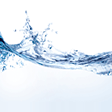
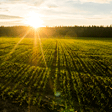


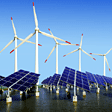
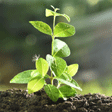
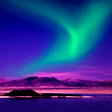

9 Comments
good report
Posted 07-02-2018 21:51
thanks for sharing
Posted 07-02-2018 21:46
Great posting Armin! It's awful that that many people are breathing in toxic, polluted air everyday! We sure need to go toward cleaner society. Thanks for sharing the interesting cake picture and hope you had fun!
Posted 12-11-2016 13:43
Thank you all for the encouraging comments!
We all need to be more aware today, even what we breathe can pose a serious threat to our health. It's a scary thought, but we need to stay strong and be the ambassadors our planet deserves :D
Posted 10-11-2016 07:49
I have been waiting to hear from you and read more about Bosnia. Air pollution is a global issue and every nation needs to act. It is interesting to read about the situation in your country and the many activities you do to save the planet. How did you make a radioactive cake?
Posted 08-11-2016 16:39
Thank you for this informative report there is every reason to curb down pollution
Posted 08-11-2016 02:47
Air pollution is one of the most serious challenges of today and is indeed 'hidden killer'. As you rightly mentioned most of the earth has polluted and unsafe air. We all must be aware of this and should do our best to use natural sprays etc (eliminating /reducing the use of chemicals which contribute to air deterioration).
It's quite interesting how you celebrate Marie Curie's brithday and you guys made 'radioactive' cake.
Thanks for sharing.
Posted 07-11-2016 23:02
Thanks for sharing, Armin! It is a shocking fact that more than 90% of the Earth has polluted air. I agree with how you mention air pollution as 'hidden killers' I can see a number of youngs and elders becoming sick when the air is not that clean. Have a great day!
Posted 07-11-2016 19:14
Wow! Thank you very much for this report, Armin! I am planning to take public/environmental health and safety for postgrad so it is really fun to see this kind of reports here. VERY COMPREHENSIVE! AWESOME!
Posted 07-11-2016 11:45